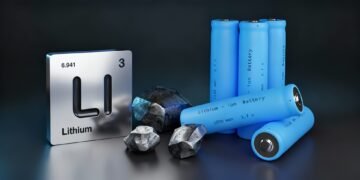Critical Minerals: Demand vs. Environmental Protection
With the world moving away from fossil fuels, demand is growing for critical minerals that are key to clean energy technologies. Lithium, cobalt, copper, and nickel are at the forefront of this demand, with the International Energy Agency reporting that lithium demand alone has tripled in the last five years. This raises concerns of potential degradation of the environment from hasty and reckless mineral exploration, more so in sensitive areas such as Indigenous lands and deep-sea ecosystems.
Recent legislative activity has now exemplified the urgency of these issues. Rep. Ed Case (D-Hawaii) recently introduced two congressional measures that seek to protect American waters from deep-sea mining until proper research on the practice’s potential impacts is conducted. These bills would also prohibit U.S. corporations from engaging in such activities on the high seas, calling for international moratoriums until proper regulations are put into place.
The International Seabed Authority, which was supposed to regulate deep-sea mining, has repeatedly missed deadlines for the development of regulatory guidelines. The absence of regulations emboldens some mining companies even to consider proceeding without them. Representative Case also cautions that deep-seabed mining could be as destructive as strip mining, potentially causing harm to millions of marine species.
Enter Artificial Intelligence: An Antidote
Against such odds, AI is emerging with promise to balance increasing demand for critical minerals with environmental protection. Many startups in this space are innovating mineral exploration using AI. This enabling endeavor, leads to identifying new mineral sources that are much quicker and with much less environmental impact compared to conventional methods.
Here are three companies that epitomize the approach, each of which has recently raised a large amount of venture capital:
1. KoBold Metals: Based in Berkeley, California, the company has raised $195 million from T. Rowe Price, with participation from Breakthrough Energy Ventures and the venture arms of BHP and Mitsubishi. It uses machine learning and scientific data to identify exploration sites that show promise.
2. GeologicAI: This Calgary-based startup raised $20 million in Series A funding from Breakthrough Energy Ventures to turn its “robot geologists,” which use machine learning with data collected from super-advanced sensors analyzing rock samples, into a commercial operation.
3. VerAI Discoveries: VerAI, which is based in Boston, collected a $12 million Series A round which was led by T. Rowe Price. The venture had other investors, such as Orion Resource Partners, Chrysalix Venture Capital, and Blumberg Capital. The company is focused on data analytics that help to identify mineral deposits located in hard-to-reach or otherwise inaccessible terrain.
All these start-ups can contribute to a different approach that will be used in mineral exploration using AI!
AI Use In Mineral Exploration
VerAI Discoveries focuses on analytics to seek mineral deposits in a “data space” rather than a physical one. Yair Frastai, CEO of VerAI Discoveries, says that most of the remaining ore deposits are below covered terrain and that conventional exploration approaches have reached a roadblock because of this. The firm’s AI-powered technique stands to cut the current 3-4 years needed for an exploration exercise to just two months, and to slash the cost from $3-5 million to $250,000.
KoBold Metals uses the power of machine learning and scientific data to narrow down prospects for exploration. The company is in its birth throes, not yet able to announce projects from around the globe, but for now will focus on the Mingomba Deposit located in the Chililabombwe District of Zambia. This property is already running an eye-popping copper grade of 3.64% versus the global average of 0.39%. With KoBolt Metals AI application, less rock has to be ripped out of the ground, which would potentially mean less environmental impact. Currently, KoBold has 50 exploration “properties” focused on copper, cobalt, lithium, and nickel.
GeologicAI works by combining AI and robotic technologies to develop digital “twins” of mineral deposits based on rock samples. The company takes a technology approach that uses hyperspectral data, sensors, high-resolution imaging, and X-ray fluorescence to look into core samples faster than the current labor-intensive methods. It is meant to help human geologists who work out in the field collecting and analyzing data from drilling sites.
Potential Benefits and Challenges
Some of the possible advantages of applying AI to mineral exploration are:
1. Improved efficiency: AI can go a long way in reducing the time and cost involved in recognizing favorable mineral occurrences.
2. Greater accuracy: Advanced data analytics and machine learning algorithms are proven to be a game-changer when it comes to identifying mineral-rich zones more precisely.
3. Reduced environmental impact: AI that directs exploration efforts only to high-potential areas could serve as a surrogate for reducing undesired disturbance to the ecosystem.
4. Economic opportunities: More efficient discovery of minerals could create jobs and spur economic growth in resource-endowed areas.
However, there are prevailing challenges:
1. Environmental concerns: With all its efforts in improving efficiency, the process of extracting minerals remains harmful to ecosystems.
2. Regulatory barriers: Today, in some specific sensitive environments such as the deep sea, comprehensive regulations that stand as a need for new mining techniques might create conflicts.
3. Ethical Concerns: The application of AI in extraction gives rise to issues on privacy of data, data ownership, and the effects of these on the local communities.
4. Technology constraints: AI is only as good as the data it is trained on, and unknown geological formations or conditions may very well present themselves.
Conclusion
As the demand for critical minerals continues to rise, the need for exploitation rises in proportion. This integration with AI technologies, in the mineral exploration sector, seems to give a more acceptable approach to meeting economic needs without much compromise on the issues of environmental protection. This current and novel AI application could offer multiple potential uses to this age-old industry. But any incoming implementations require thoughtful measures to ensure safe and responsible deployment and regulations. Concurrently, this is for all related ecosystems and potentially vulnerable communities to not become overly exposed.
In case AI is successfully applied toward mineral exploration, then we could be in for significantly increased mineral discoveries and extraction of necessary mineral resources. This could also go hand in hand, with reducing damage to the environment, while pushing towards a clean energy transition. To that effect, all of this demands partnerships among tech companies, mining operators, environmental scientists, and policymakers. While all these technologies continue to advance toward maturity in applying all their potentialities in sustainable resource management.
Acknowledgment: This article was inspired by and includes information from "AI Could Be The Recipe For Faster, Less-Destructive Minerals Mining" published on Trellis.net. For more detailed insights, you can read the full article here.







